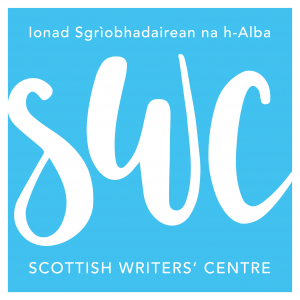
Though Gordon Meade was speaking alone, our evening with him was defined by relationships and connections – between words and pictures, between animals and people, and between writers and the things they choose to write about.
Gordon was here to discuss his most recent project, Les Animots: a Human Bestiary, a book of poetry and pictures produced in collaboration with illustrator Douglas Robertson. Due to recent storms Douglas was unable to travel up from England, but though he was absent in person, the combination of the presence of his drawings in the book, and Gordon’s description of his part in the creative process, meant that we gained a full insight into both sides of the work that went into this remarkable cross-media collaboration.

Les Animots was not initially conceived as a multidisciplinary project, however; indeed, it was not really conceived as a project at all. Gordon found himself writing short poems in the summer of 2014, following a move to London, that were unified only by their length, their shared animal subject matter, and the fact they were different to anything else he had written before. ‘I just let them come,’ he told us. There were fifty or sixty at first, but he was reluctant to edit them or decide what to do with them during this initial period of inspiration. It was only when Douglas got in touch about the possibility of illustrating an earlier body of Gordon’s work, ‘The Gull Poems’, that the project came together, as he suggested they both work on something new instead.
Gordon and Robert worked individually refining their works before joining them, but they met five or six times during the course of the project, usually in the presence of animals: in London’s Museum of Natural History, or in the library of London Zoo. ‘There were no pitfalls between us,’ Gordon told us: ‘Douglas just got what the poems were trying to say’.
The poems themselves are small and playful, but abound with overlapping resonances and multiple meanings. In the first of many quotes cited over the course of the evening, Gordon invoked scholar Laurel Peacock who wrote of the Derrida-coined word that comprises the title of the collection: ‘An animot is an animalistic kind of word and a linguistic kind of animal, attributing animation, even agency to language’.
The complex relationship between animals and the attributes given to them by humans, between the namer, named, and the language used to do the naming, is a running theme throughout the collection, which is organised into four thematic galleries. The poems, which appear with titles only in the index, can be read as being simply about animals, or as symbolically about people, but are most rich when read in the liminal light between the two, causing us to question our understanding not just of the creatures in the world around us, but also our understanding of our own and other humans’ behaviour.

The animals are treated in the poems without prepositions (‘Moth doesn’t mind being the black sheep of the family’): their names are proper nouns that erode any sense of the general and imbue the subject and the verse with a potent and unfamiliar sense of individuality. Each gallery begins with a quote from another writer meant to confound and transform the corpus that follows it, and the harmonies and dissonances that develop between these statements – which range from the episode of Adam naming the beasts in the Old Testament to twentieth century American poetry – and the poems that follow them cause a further sense of defamiliarisation.
Metamorphoses abound: hack writers (‘purveyors of ink’) become squids, worms become processing plants, and even the independent identities of the text and the illustrations are transformed when glimpsed together on the page. ‘They are neither poems nor illustrations, but both at the same time, that’s how we see them,’ Gordon tells us of his and Douglas’ views on the collaborative works they produced together. The spatial and visual arrangements of the poems and pictures in the book were done ultimately by Douglas, with Gordon only specifying that his line-endings were to remain the same. ‘It was the best book I’ve been involved in and also the most frustrating,’ he told us, purely because of the length of time and number of conflicting conversations it produced.



